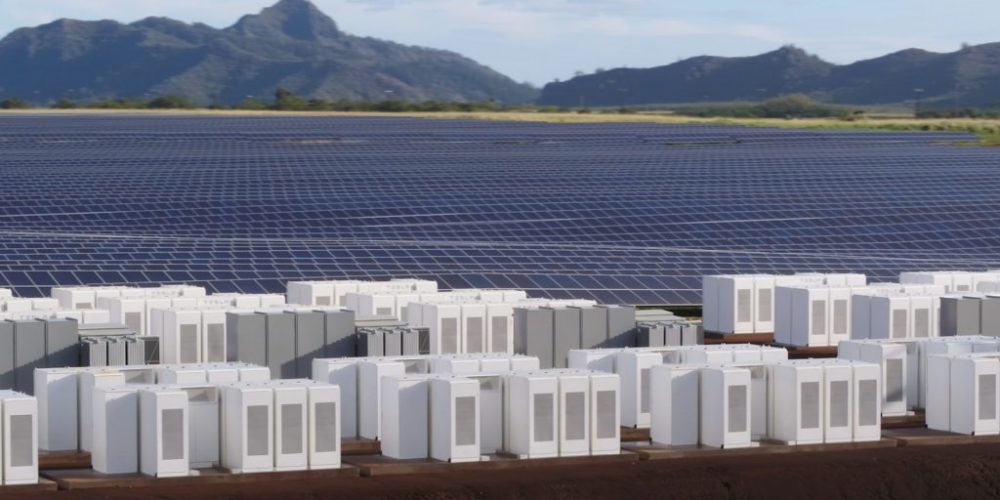Solar-plus-storage prices, or the levelized cost of electricity (LCOE), are poised to fall significantly over the next five years at the utility scale and in the commercial and industrial (C&I) segments, Wood Mackenzie claims in a new research report.
The unsubsidized utility-scale LCOE for a four-hour lithium-ion solar-plus-storage system will enjoy a cost premium of 48% to 123% over the LCOE for solar this year, but that will slide to a range of 39% and 121% by 2023, the Edinburgh-based consultancy says.
“By then, solar-plus-storage costs would already be competitive against gas peakers in all the National Electricity Market (NEM) states of Australia,” said WoodMac research analyst Rishab Shrestha. “The country’s utility-scale solar-plus-storage LCOE will hover at about 23% above average wholesale electricity price.”
In the coming years, solar-plus-storage may be ideally positioned to help address grid resiliency and the challenges posed by the integration of variable, intermittent renewables into grid networks throughout the Asia-Pacific region, WoodMac says, noting that solar and battery costs continue to fall.
Thailand is the only country in the Asia-Pacific region in which WoodMac expects the utility-scale solar-plus-storage LCOE to sit below the average wholesale electricity price by 2023. The Southeast Asian nation does not have a wholesale electricity market, but the company says the industrial power price is higher than in other wholesale markets and therefore offers “competitive solar-plus-storage economics.” In most markets throughout the Asia-Pacific region, capex subsidies and other sweeteners will still be needed for projects to be built, WoodMac adds.
C&I solar-plus-storage
The premium over solar LCOE for C&I solar-plus-storage now sits between 56% and 204%, but that will slide to a range of 47% to 167% by 2023, the consultancy says. It expects unsubsidized C&I solar-plus-storage to be competitive in Australia, India and the Philippines within the next five years.
“The reason you have such wide LCOE range is because we have some mature markets where solar cost is extremely competitive while others are not and some in-between,” says Shrestha. “This is due to a mix of labour/land/ environment/ civil costs, weighted average cost of capital, and procurement methods (tenders vs. feed-in tariffs). Also, some markets have very well established supply chains with the availability of storage manufacturing.”
WoodMac believes that the region’s residential solar-plus-storage market will offer a significant opportunity in the years to come. It notes how government subsidies offered consumers in the Australian state of New South Wales considerable savings on their electricity bills last year via solar-plus-storage installations.
Japan’s residential solar-plus-storage market will also continue to provide opportunities in the next few years, as the government’s feed-in tariff for roughly 600 MW of solar capacity is set to expire this year. Storage retrofits could therefore offer an opportunity for Japanese households to dodge high prices.
WoodMac acknowledges that the global energy storage space is still in the early stages of development. However, companies will need to develop viable business tailored to the design of different markets and potential policies. In addition, a range of safety and fire-related issues still need to be comprehensively addressed for markets to truly take off.
This content is protected by copyright and may not be reused. If you want to cooperate with us and would like to reuse some of our content, please contact: editors@pv-magazine.com.








By submitting this form you agree to pv magazine using your data for the purposes of publishing your comment.
Your personal data will only be disclosed or otherwise transmitted to third parties for the purposes of spam filtering or if this is necessary for technical maintenance of the website. Any other transfer to third parties will not take place unless this is justified on the basis of applicable data protection regulations or if pv magazine is legally obliged to do so.
You may revoke this consent at any time with effect for the future, in which case your personal data will be deleted immediately. Otherwise, your data will be deleted if pv magazine has processed your request or the purpose of data storage is fulfilled.
Further information on data privacy can be found in our Data Protection Policy.